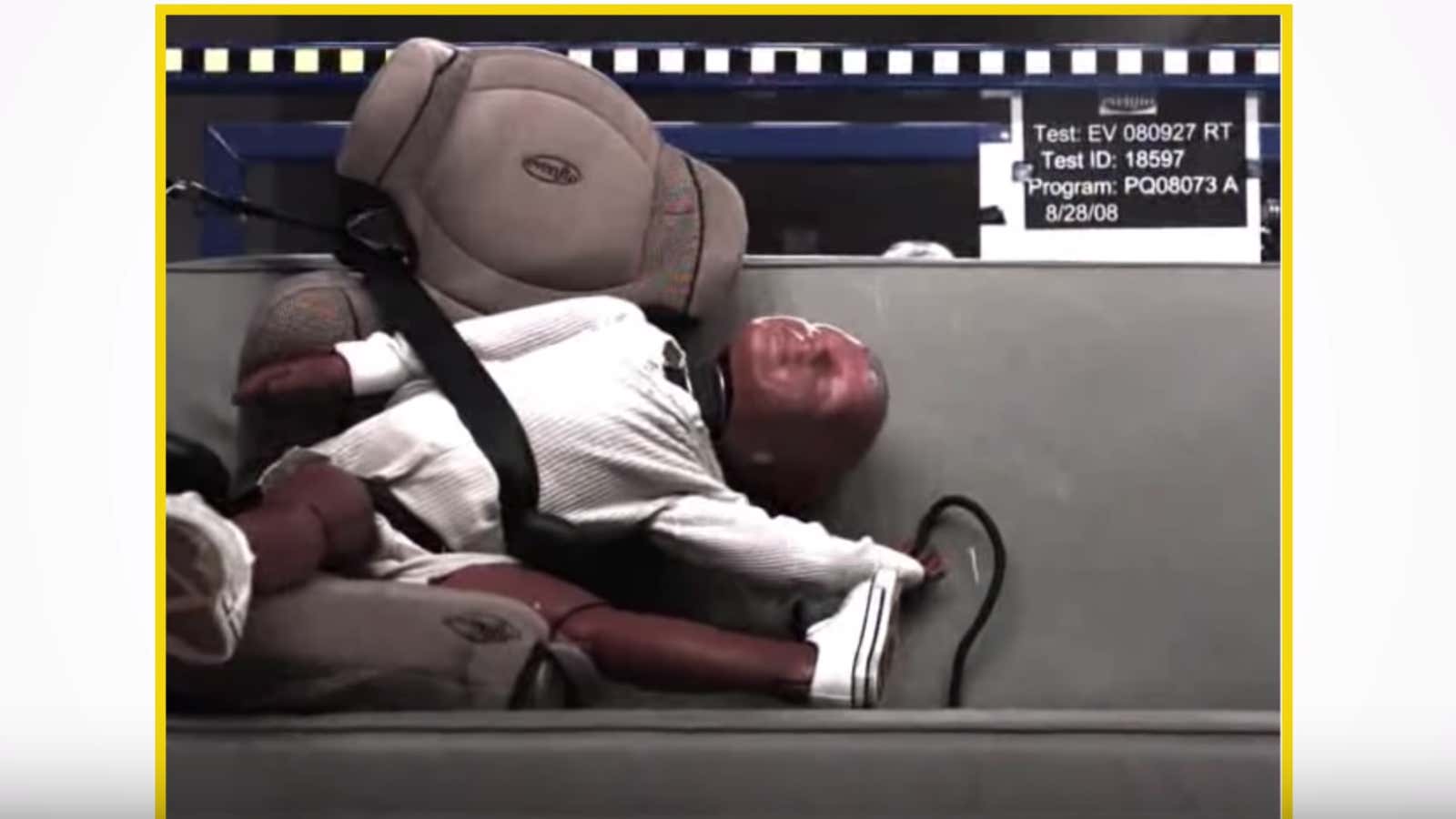When Choosing a Car Seat, Follow the AAP Safety Guidelines.

The alarming report released today by ProPublica on the safety of child safety seats sold by Evenflo and others, serves as an important reminder for parents to always follow the American Academy of Pediatrics guidelines for car seat safety. Manufacturer’s recommendations for minimum height and weight may not be as safe as they claim.
The crux of the matter is whether the Evenflo Big Kid booster seat is safe for children who weigh only 30 pounds, which is the minimum requirement it has touted as safe, at least until recently. But ProPublica’s own videos of Evenflo’s side impact tests show how a child can suffer serious head, neck, or spinal injuries – or die – in such an accident.
Parents may assume that because the seats are tested and meet federal safety standards, it is always safe to follow the manufacturer’s recommendations for height and weight. But while the seats are technically compliant with federal safety regulations, this may only be because there are currently no such standards for testing seat performance in vehicle side collisions.
This is why, instead of following the manufacturer’s instructions for height and weight, parents are better off following the AAP guidelines , which are carefully and regularly updated. ProPublica explains :
While car seat guidelines have changed over the years, the American Academy of Pediatrics adheres to one key safety principle: Parents should not transfer children into a child seat until they reach the maximum weight or height of their seat buckled. Back in the early 2000s – before Evenflo, Graco, Dorel, and others told parents that boosters were safe for babies as little as 30 pounds – the American Academy of Pediatrics advised that children weighing 40 pounds or less would be best protected in a seat. using a special seat. own internal harness. At the time, this was the limit of most harnessed seats. The vast majority of harnessed seats on the market today are suitable for children weighing up to 65 pounds and up to 4’1 ” tall.
The child car seats, according to AAP , are designed for “older children who have outgrown their forward-facing seats.” While booster seats are easier to install and carry from vehicle to vehicle, it is best to keep children in the harnessed seats for as long as possible.
Note: ProPublica reports that after investigating safety concerns for children over 30 pounds, Evenflo has changed the minimum weight on its website to 40 pounds. So they ordered another car seat on the company’s website and found that the seat packaging, manual, and label still state that the seat has a minimum of £ 30.